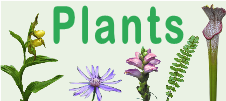







Loading profile. Please wait . . .
Sedum nevii Gray
Nevius Stonecrop




Federal Protection: No US federal protection
State Protection: Threatened
Global Rank: G3
State Rank: S1
Element Locations Tracked in Biotics: Yes
SWAP 2015 Species of Greatest Conservation Need (SGCN): Yes
SWAP 2025 Species of Greatest Conservation Need (SGCN): Yes
2025 SGCN Priority Tier: High Conservation Concern
Element Occurrences (EOs) in Georgia: 5
Habitat Summary for element in Georgia: Gneiss ledges on river bluffs
Perennial, succulent herb forming a ground-hugging network of stems bearing rosettes of evergreen leaves at the ends of the stems. The rosette leaves are small, flat, spoon-shaped, hairless; they superficially appear whorled but are alternate. The stem leaves are usually less than 0.5 inch (0.7 - 1.5 cm) long, narrow, alternate, hairless, gray-green (but not glaucous), widest near the middle and tapering to a dull point, slightly flattened, with a spur at the base curving away from the stem attachment, spirally arranged around the stem. Flowering stems are up to 6 inches (15 cm) long, held erect or drooping. Flower clusters are 3-branched or sometimes forked. Flowers are about 0.4 inch (1 cm) across with 4 or 5 pointed, white, spreading petals, 4 or 5 spreading sepals, and 8 - 10 red-tipped stamens. Fruits are about 0.25 inch (6 - 8 mm) wide, cross- or star-shaped, with 4 (occasionally 5) segments.
Wood Stonecrop (Sedum ternatum) has whorled, nearly round leaves and flowers with 4 (never 5) petals; its flowers are also held in 3-branched inflorescences.
Cliff Stonecrop (Sedum glaucophyllum) has alternate, oval, thickly succulent leaves with a whitish, waxy coating; it occurs in North Carolina and Virginia, but is not known from Georgia.
Gold-moss Stonecrop (Sedum sarmentosum), a native of China, has escaped from gardens and is found on rock outcrops throughout the southeast; its leaves are whorled and its flowers are yellow.
Granite Stonecrop (Sedum pusillum) occurs on granitic outcrops in the Piedmont. For more information, see: https://www.georgiabiodiversity.org/portal/profile?group=plants&es_id=16355
Shallow, gravelly soils on steep bluffs of gneiss (an acidic, granite-like rock) above the Chattahoochee River.
Nevius’s Stonecrop is a perennial herb that reproduces sexually by seed as well as vegetatively, when rosettes are separated from the parent plant and become established as separate (though genetically identical) plants. Although no life history studies of this species have been published, other Sedum species are capable of both self- and cross-pollination and are pollinated by a variety of bees and flies.
Sedum nevii flowers May–June but the mats of evergreen rosettes are conspicuous all year.
Georgia, Alabama (growing on limestone and shale), and Tennessee (on quartzitic slate).
Loss of tree cover, erosion, and invasion by exotic pest plants, especially Japanese honeysuckle.
| Threat 1 | Threat 2 | Threat 3 | |
|---|---|---|---|
| General Threat | Invasive & other problematic species, genes & diseases | Pollution | None |
| Specific Threat | None | None | None |
Sedum nevii is ranked S1 by the Georgia Department of Natural Resources, indicating that the species is critically imperiled in Georgia. It is listed as Threatened by the State of Georgia. Five populations have been documented in Georgia, but only one has been confirmed since 2000. One is protected on conservation land and 3 are protected by a management agreement with Georgia Power Company.
Monitor populations for invasion by exotic pest plants and eradicate them where needed. Preserve tree cover at sites. Prevent erosion from upslope development and clearing.
Calie, P.J. 1981. Systematic studies in Sedum section Ternata (Crassulaceae). Brittonia 33(4): 498-507. https://link.springer.com/article/10.2307/2806751
Chafin, L.G. 2007. Field guide to the rare plants of Georgia. State Botanical Garden of Georgia and University of Georgia Press, Athens.
Clausen, R.T. 1966. Sedum nevii. Sedum of North America, North of the Mexican Plateau. Cornell University, Ithaca, NY. https://www.crassulaceae.com/crassulaceae.com/botanik/pflanzen/botanzeige_scan_en.asp?gnr=1340&scan=182420-1&cat=5&name=Sedum
Clausen, R.T. 1949. Distribution and variation of Sedum nevii. Cactus and Succulent Journal of America 21(6): 180-185.
GADNR. 2020. Element occurrence records for Sedum nevii. Georgia Department of Natural Resources, Wildlife Resources Division, Social Circle, Georgia.
Kral, R. 1983. A report on some rare, threatened, or endangered forest-related vascular plants of the South. Technical Publication R8-TP2. United States Forest Service, Atlanta.
NatureServe. 2020. Sedum nevii species account. NatureServe Explorer. NatureServe, Arlington, Virginia. https://explorer.natureserve.org/Taxon/ELEMENT_GLOBAL.2.145151/Sedum_nevii
Ohba, H. 2009. Sedum nevii species account. Flora of North America, Vol. 8. http://beta.floranorthamerica.org/Sedum_nevii
Patrick, T.S., J.R. Allison, and G.A. Krakow. 1995. Protected plants of Georgia. Georgia Department of Natural Resources, Wildlife Conservation Division, Social Circle.
Weakley, A.S. 2015. Flora of the southern and mid-Atlantic States. University of North Carolina Herbarium, University of North Carolina, Chapel Hill. http://www.herbarium.unc.edu/flora.htm
Linda G. Chafin
L.Chafin, Aug. 2008: original account.
D.Weiler Jan. 2010: added pictures.
L. Chafin, May 2020: updated original account.